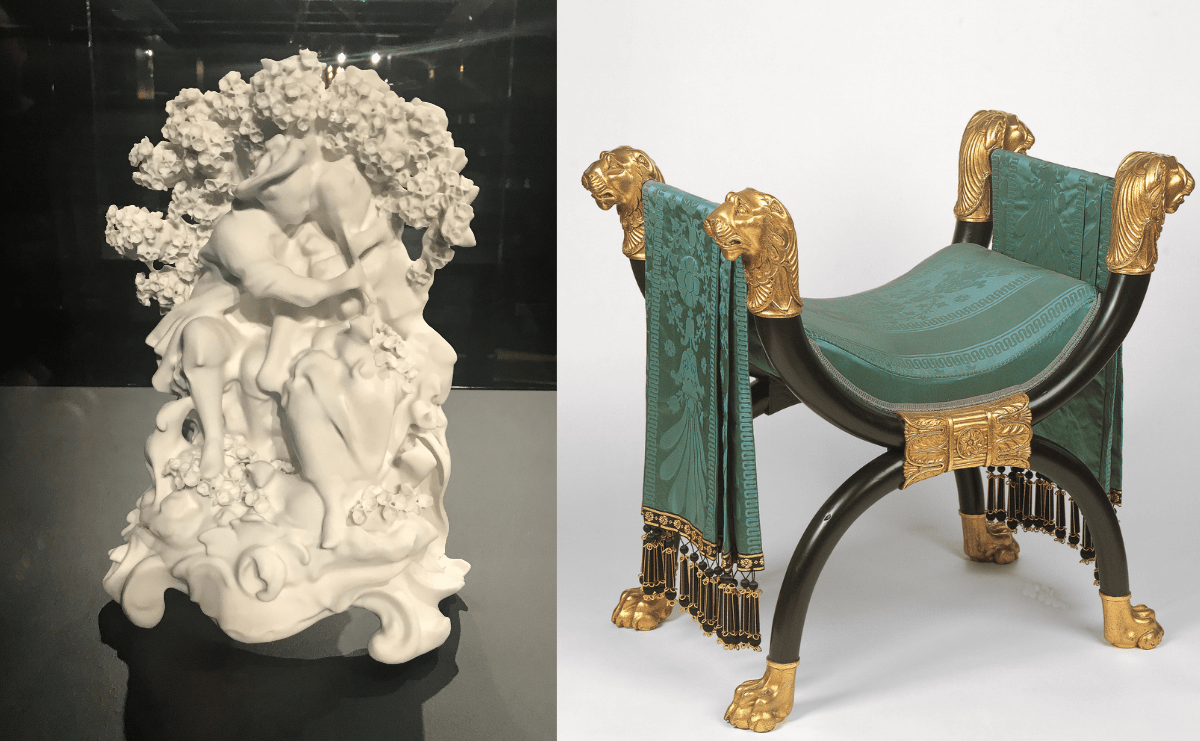In his lifetime, David J Roche AM (1930 – 2013) amassed an impressive collection of furniture, clocks, paintings and ceramics from the 18th and 19th centuries. Those 3,500 objects are now housed in The David Roche Foundation’s House Museum in North Adelaide. I was pleased the work in this exhibition was described as ‘Decorative’ Art. This allows the viewer to simply enjoy the work, as there is a difference between viewing decorative art and an art exhibition.
This is perhaps best illustrated by the original collection being housed in Roche’s home as well as the surrounds of the attached museum. There is an unabashed celebration of visual pleasure in the decorative arts. Yes, art can and sometimes does fill this role too, but in 2022, it seldom does in the same way.
Roche’s sumptuous collection is now the subject of digital experimentation by Dr Rochus Urban Hinkel of the University of Melbourne. Doppelgänger and Zombies is a technologically proud exhibition. It explores and exploits 3D scanning and printing, CNC milling, digital modelling, rendering and image manipulation software, and algorithms, as well as augmented and virtual reality. Hinkel uses these technologies to fabricate physical and digital artefacts.
The black-walled galleries are illuminated by spot-lit glass cases and domed covers. The mesh and slices made from 3D scans of objects from the collection form the basis of wall-sized projections. These utilitarian aides to digital manufacture are now presented as animated undulating digital works destined to be minted as NFTs (non-fungible tokens) and released for auction. Yes, you can own some this work, if you have a digital wallet, at the auction to be hosted on 23 July2022.
A ceramic work, The Music Lesson circa 1765, modelled by Joseph Willems and produced at the Chelsea Porcelain Factory in Britain was itself derived from another work of art, L’Agréable Leçon by French artist François Boucher (1703–1770). This copy is then copied again, this time by Hinkel as source for another experiment. While the original form has a colourful exterior Hinkel has now oddly put the colour on the inside – strange goings on, indeed.
Resin-printed reproductions of an X-frame French stool by Thomas Hope (1769-1831) have been 3D printed to a 1:16 scale. These little copies shimmer under the lights as if they were carved out of crystal – we are informed this is the scale of a French doll’s house of the period. The original piece, made with ebonised wood, is gilded and covered in green silk and on display with its CNC (computer numerical control) copy, now with red fabric that is applied more like skin than upholstery.
Read: Installation review: Lightscape
There are many interesting questions suggested by the title, but not articulated in the exhibition itself. A key question might be about originality and the value we may place on it in the future. If we can produce a perfect ‘Doppelgänger’, so accurate that we can’t tell the original from the copy, do we need the original? In a Post-Modernist sense, have we used up all our cultural creative capital, and now there is nothing to do but copy what went before?
Zombies are the undead in Haitian mythology, so we might ask then are the beautifully crafted objects of the past to be re-animated for an audience of the future? It seems that is already happening.
The David Roche Foundation deserves credit for bravely making their impressive collection available for re-interpretation in this novel way.
Doppelgänger and Zombies
Dr Rochus Urban Hinkel
The David Roche Foundation House Museum, Adelaide
Free entry
Doppelgänger and Zombies will be on display until 23 July 2022.





